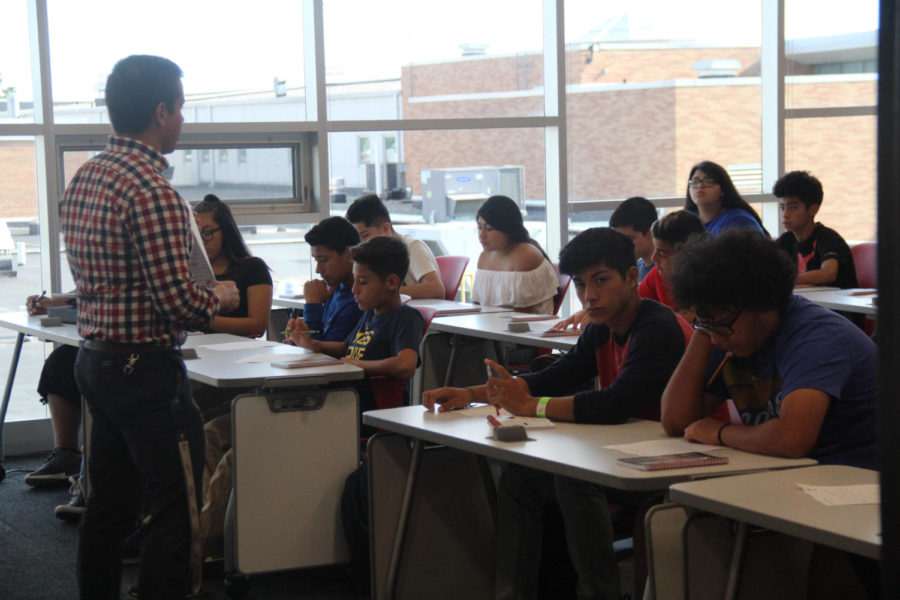Students, staff continue to weigh pros, cons of new schedule
January 22, 2018
After one semester under the new 8-period schedule, students and staff said they continue to struggle to adapt to the changes, specifically mentioning difficulties with the timing and the pacing of having almost double the course load.
However, many added they remain optimistic that, with time, the benefits of the schedule change will eventually outweigh the negatives felt in the first year.
One course that many students said they struggle with the time constraint is in P.E.
“[P.E. students] barely have any time to play sports after changing and taking attendance,” said junior Justin Binz.
By the time students change into their required gym uniform, gather for attendance and receive instructions on what the class will be doing that day, many said they feel as though the first half of the period is gone. Students also added time is lost with the setting up of the activity and the time needed to change at the end of the period. It, then, feels as though the students only have about a solid 15-20 minutes for the activity, which is even less on shortened days.
Students and staff also said the new schedule makes it harder for students and teachers to meet throughout the day. They have less time to see each other in 50-minute periods when compared to the 90-minutes periods of the previous block schedule.
“The single biggest thing that changed was my time with students outside of class. Without homeroom, it is hard to meet with students and discuss stuff one-on-one with them outside of class,” said Physics Teacher Mark Michalski.
To make up for the loss of homeroom, students are encouraged to work with their teachers before and after school. Students also have the option to take a study hall, for no credit, to make up for the time students would have spent in homeroom doing homework.
Another struggle teachers said they are facing is keeping up with the grading. They added they are getting backed up, which becomes unfair to students who want more timely feedback.
“In terms of reading student writing, I have almost twice as many students, so it is difficult to give meaningful feedback in a timely manner,” said English Teacher Jim Drier.
Despite having more students at one time and more grading, teachers said one benefit to the new schedule is having the same students for the entire year rather than for just half a year.
“Coming from being a language teacher, I like how my students have the whole year to learn the language instead of having a gap from learning Spanish, sometimes for a whole year,” said Spanish Teacher Angela Stanisz.
Another benefit teachers mentioned about the new schedule is how much more involved students are in the class now that they are not in that same class for 90 minutes.
“I’m finding students paying attention better for the 50 minutes versus last year under the block schedule,” said Drier.
As the school community continues to get used to the new schedule, many said they hope the pros will start to overrun the cons.
Binz said, “I do think that this new schedule will soon benefit me as I continue to adjust.”



